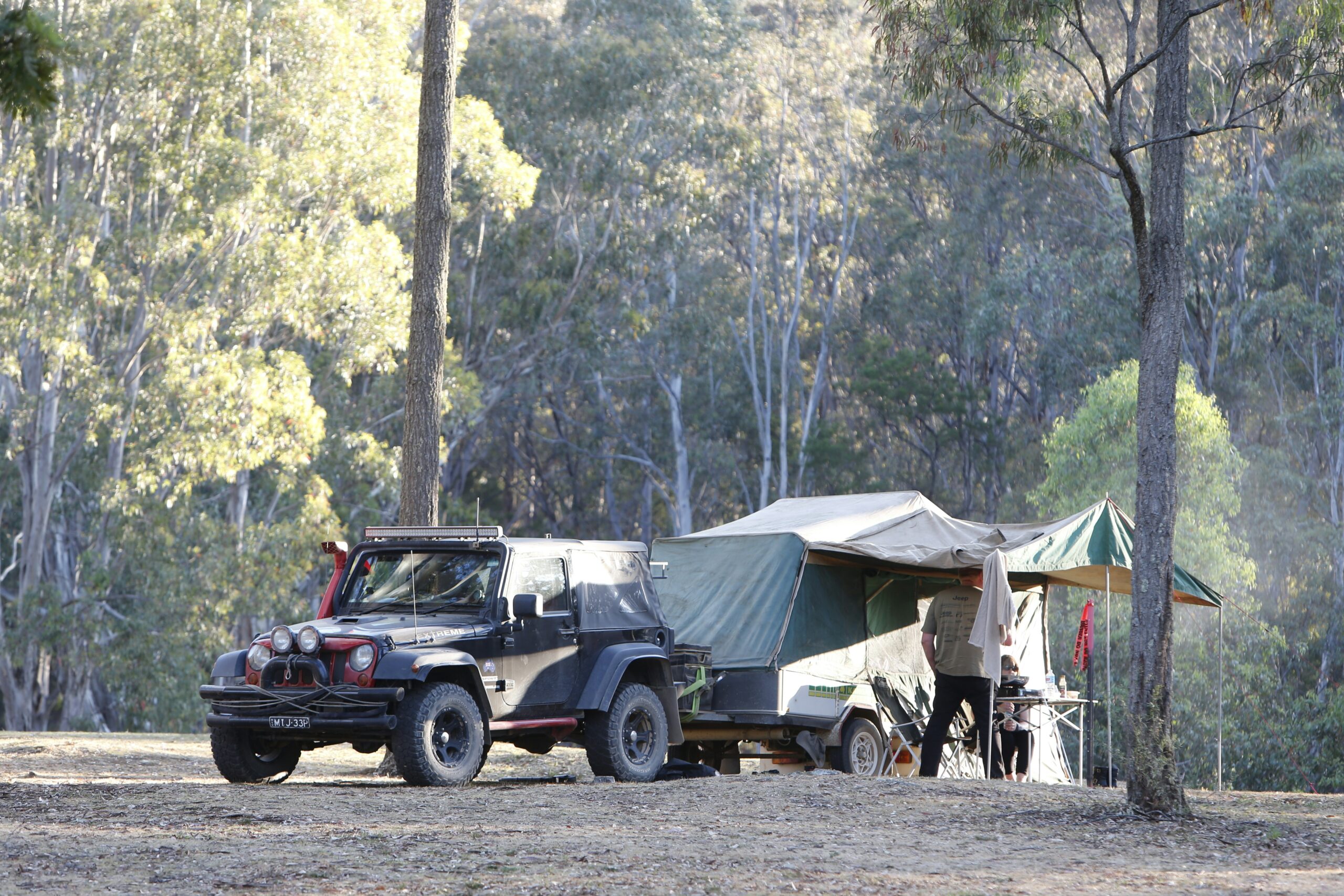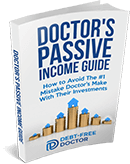How to Buy an RV Park: Beginner’s Guide to Investing
Driving past a full RV park with travel trailers and fifth wheels packed into every site makes you wonder—what would it be like to own one?
For many investors, learning how to buy an RV park is the first step into a business model that combines cash flow, lifestyle benefits, and strong property value appreciation.
Across the United States, there are around 15,000–16,000 RV campgrounds and parks, from small RV parks with gravel roads to large RV resorts offering unlimited access to pools, hot tubs, and dog parks. With demand for recreational vehicles continuing to grow and more people embracing full-time RV living, RV park investments have become one of the most overlooked opportunities in commercial real estate.
Don’t Miss Any Updates. Each week I’ll send you advice on how to reach financial independence with passive income from real estate.
Sign up for my newsletterWhy RV Parks Are a Good Investment
Demand for RV travel has exploded in recent years. Families, retirees, and remote workers are purchasing recreational vehicles and seeking great places to park them near national parks, lakes, and other popular destinations.
Campground owners have seen record-high occupancy rates, often reaching 100% during peak summer months and holiday weekends.
Limited supply
One of the biggest drivers of this demand is the limited supply of new campgrounds. Many existing RV parks were built decades ago and require upgrades to meet current standards. This imbalance between supply and demand increases both property value and income potential for new buyers.
How about returns?
From a returns standpoint, RV parks are attractive because they often deliver higher cap rates than other commercial real estate. Cap rates in the RV campground sector typically range between 8–12%, with cash-on-cash returns reaching 15–20% or more in well-managed properties.
Multiple revenue streams, from RV site rentals to private RV lot leases and amenity fees, make this asset class a good investment for both active and passive investors.
Want to know how much RV parks really make? Watch this video:
Understanding the RV Park Business Model
Before buying your first park, it’s important to understand how RV campgrounds operate. There are several types of RV parks, each with its own business model and cash flow potential.
#1. Transient parks
Transient RV parks cater to short-term RV travelers who stay for a night or two while passing through.
#2. Resorts
Destination RV resorts are located in popular vacation spots and often include additional amenities like fire pits, hot tubs, and larger parking lots for big rigs.
#3. Extended stay
Extended-stay RV parks focus on long-term rentals for full-time RVers and traveling workers, sometimes blending into the mobile home park model.
#4. Hybrid parks
Hybrid parks combine elements of each, offering RV sites, private RV lots, and even some mobile home pads.
Understanding which type of park you want to own helps you determine the right business model, pricing structure, and marketing approach.
RV park revenue
Revenue comes from more than just RV sites. Many campground owners charge for basic amenities like Wi-Fi, propane, and laundry, as well as premium features such as dog parks or hot tubs.
KOA (Kampgrounds of America) properties and other larger campgrounds often have the largest inventory of parks and benefit from built-in marketing and brand recognition.
Setting Your Budget and Financing
The first step in learning how to buy an RV park is establishing a budget and understanding the total cost of ownership. The purchase price is only part of the equation. Initial costs include the sales price, closing costs, and immediate upgrades, while the overall cost factors in property taxes, septic tanks, gravel roads, and long-term maintenance.
Small RV parks often fall in the $500,000 to $2 million range, while larger RV resorts with hundreds of RV sites can cost $5 million or more depending on size, square footage, and amenities. Understanding average costs and your target price range helps narrow down the right opportunities.
Financing 101
Financing is another critical factor. An SBA loan is often a great way for first-time buyers to secure funding with as little as 10 percent down. Business loans and credit unions are other viable options, and seller financing can help reduce the upfront cost when buying from an existing campground owner.
Because interest rates directly affect cash flow, it’s important to match financing terms to your projected capitalization rate and income potential.
Join the Passive Investors CircleFinding the Right Location
Choosing the right place is one of the most important decisions when buying an RV park. Location drives demand, occupancy, and long-term property value. Parks near national parks, lakes, or popular destinations tend to have more consistent camper nights and higher sales prices.
If you’re buying an existing RV park, talking to the current owners provides valuable insight into campground costs, cash flow, and potential problems. The previous owner’s years of experience can give you a better idea of what upgrades or business model adjustments are needed.
Should you use an agent?
Working with a real estate agent who specializes in RV campground sales can also help. These agents have access to the largest inventory of parks and can connect you with deals that aren’t always publicly listed on the campground marketplace.
For first-time buyers, conducting a feasibility study is essential. It allows you to evaluate property value, permit requirements, and whether the park’s location and amenities align with your business plan.
Conducting Due Diligence
Thorough due diligence separates successful RV park investors from those who overpay or miss critical details. Start by reviewing at least three years of profit-and-loss statements and camper night data.
This gives you an accurate picture of past cash flow and helps you project future income.
Infracsture inspection
Inspect infrastructure carefully. Septic tanks, electrical systems, and water hookups are major components of any RV campground. Gravel roads, fire pits, and basic amenities may seem minor, but can become significant additional costs if they need upgrades.
Biz model
Evaluate the overall business model. Are there opportunities to add RV sites, private RV lots, or premium features like a dog park or hot tub to boost revenue and property value?
Compare the park to nearby campgrounds to understand average costs, occupancy rates, and potential improvements.
Zoning and permits
Finally, check zoning and permit requirements to ensure the property meets local regulations and has room for expansion.
A feasibility study combined with expert guidance from an experienced commercial real estate agent can help you avoid costly mistakes.
Don’t Miss Any Updates. Each week I’ll send you advice on how to reach financial independence with passive income from real estate.
Sign up for my newsletterNegotiating and Closing
Once you’ve identified the right park, structuring the deal properly is the next step. Whether you use an SBA loan, a business loan, or seller financing, make sure your interest rates and amortization schedule align with your projected cash flow.
Negotiating the sales price based on your due diligence findings is critical. If septic tanks, gravel roads, or other infrastructure require significant investment, use those items to adjust the purchase price or secure credits at closing.
Involving a real estate agent with years of experience in RV park investments can provide expert guidance through this process.
After closing, new RV park owners often focus on improvements that increase cash flow quickly. Adding RV sites, upgrading basic amenities, or enhancing guest experiences with features like a dog park or hot tub are great ways to increase occupancy and overall property value.
Real-World Example
Consider an existing RV campground with 100 RV sites listed at $4 million. The previous owner’s financial statements show a net operating income (NOI) of $400,000. Dividing the NOI by the purchase price yields a 10 percent cap rate, which falls within the desirable range for RV park investments.
If you finance 70 percent of the purchase price with an SBA loan at 6.5 percent interest, your annual debt service might be around $180,000. After accounting for additional costs such as property taxes, insurance, and minor upgrades, your annual cash flow could range between $180,000 and $200,000. That produces a 15–18 percent cash-on-cash return, a strong result compared to many commercial real estate assets.
Now imagine a smaller RV park priced at $1.5 million near a national park. It offers basic amenities, gravel roads, and room to add 20 new RV sites. A feasibility study shows that upgrading septic systems, adding a dog park, and improving infrastructure could increase NOI from $120,000 to $250,000 within three years. That kind of value-add strategy could push the cap rate above 12 percent and significantly increase property value over time.
Final Thoughts
Buying an RV park is more than a real estate transaction; it’s investing in a business. The process involves analyzing the purchase price and total cost, conducting detailed due diligence, and understanding the campground marketplace. For first-time buyers, working with experienced campground owners and using expert guidance can make the difference between a good investment and a costly mistake.
RV park investments offer strong cash flow, attractive cap rates, and the opportunity to add value through upgrades and improved management. Whether you are considering a small RV park, a new campground, or a larger RV resort, following a disciplined process and conducting a thorough feasibility study is the best way to succeed.
For investors seeking a great way to diversify outside the stock market, owning an RV park or investing in RV park syndications can provide both financial returns and lifestyle benefits. With the right place, a solid business model, and proper planning, RV parks can deliver long-term wealth and steady passive income.
FAQs
What is the average cost of buying an RV park?
Small RV parks often sell for $500,000 to $2 million, while larger RV resorts with extensive amenities and hundreds of RV sites can range from $5 million to $10 million or more. The total cost also includes property taxes, upgrades, and additional costs for infrastructure.
Are RV parks a good investment for first-time buyers?
Yes, RV parks can be a good investment for first-time buyers when proper due diligence is done. Starting with an existing RV park or campground gives you historical financial data and a business model you can build on.
What financing options are available for RV park investments?
Common options include SBA loans, traditional business loans, credit union financing, and seller financing. SBA loans are popular for new RV park owners because they often require as little as 10 percent down.
How important is the cap rate when buying an RV park?
Cap rate is a key metric in evaluating RV park investments. A cap rate between 8–12 percent is typical and helps determine if the purchase price matches the park’s income potential.
Should I buy a new campground or an existing RV park?
An existing RV park often provides immediate cash flow and historical financials, while a new campground may require a feasibility study, permit approvals, and higher upfront cost. First-time buyers typically start with an existing park to reduce risk.



